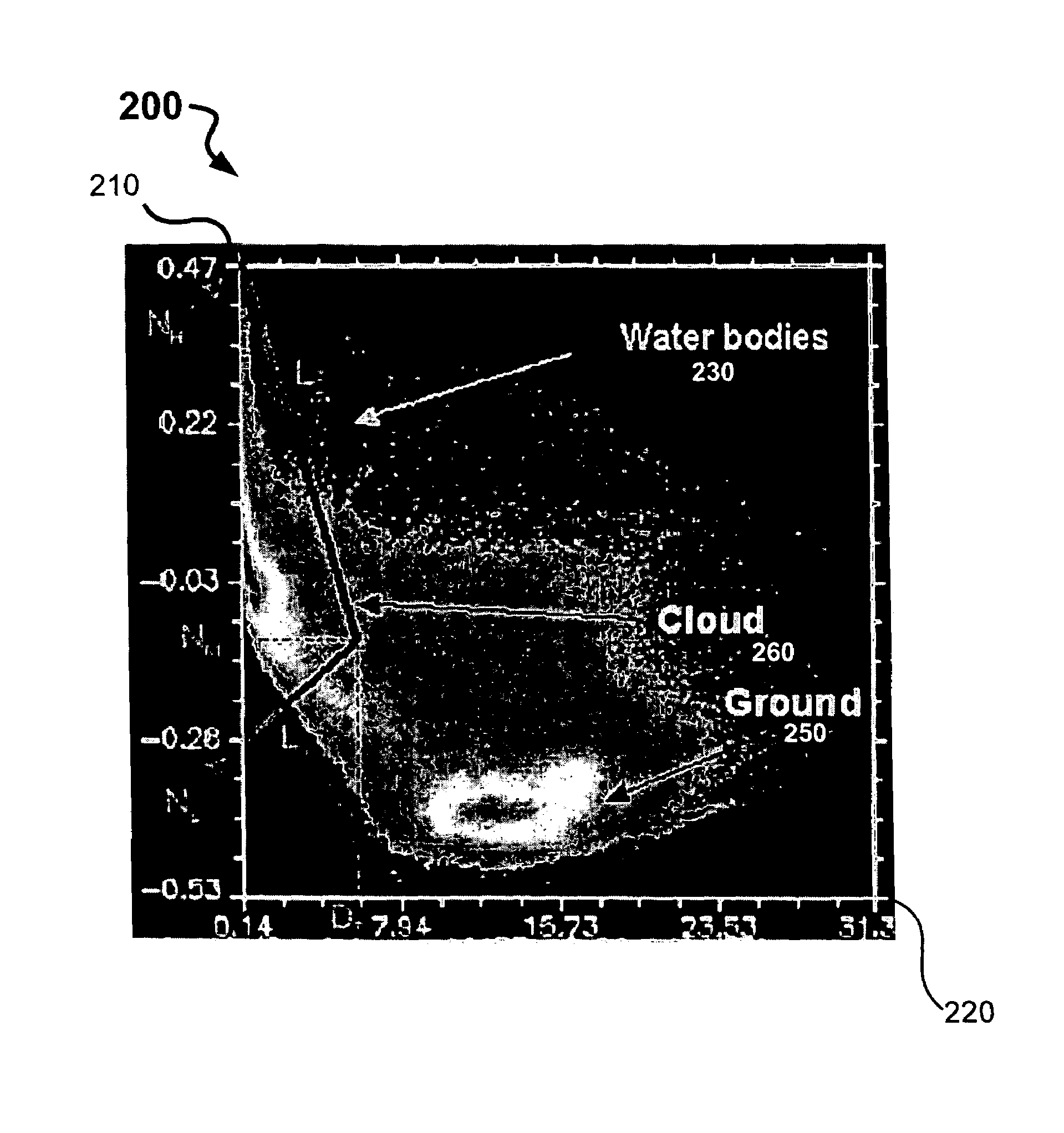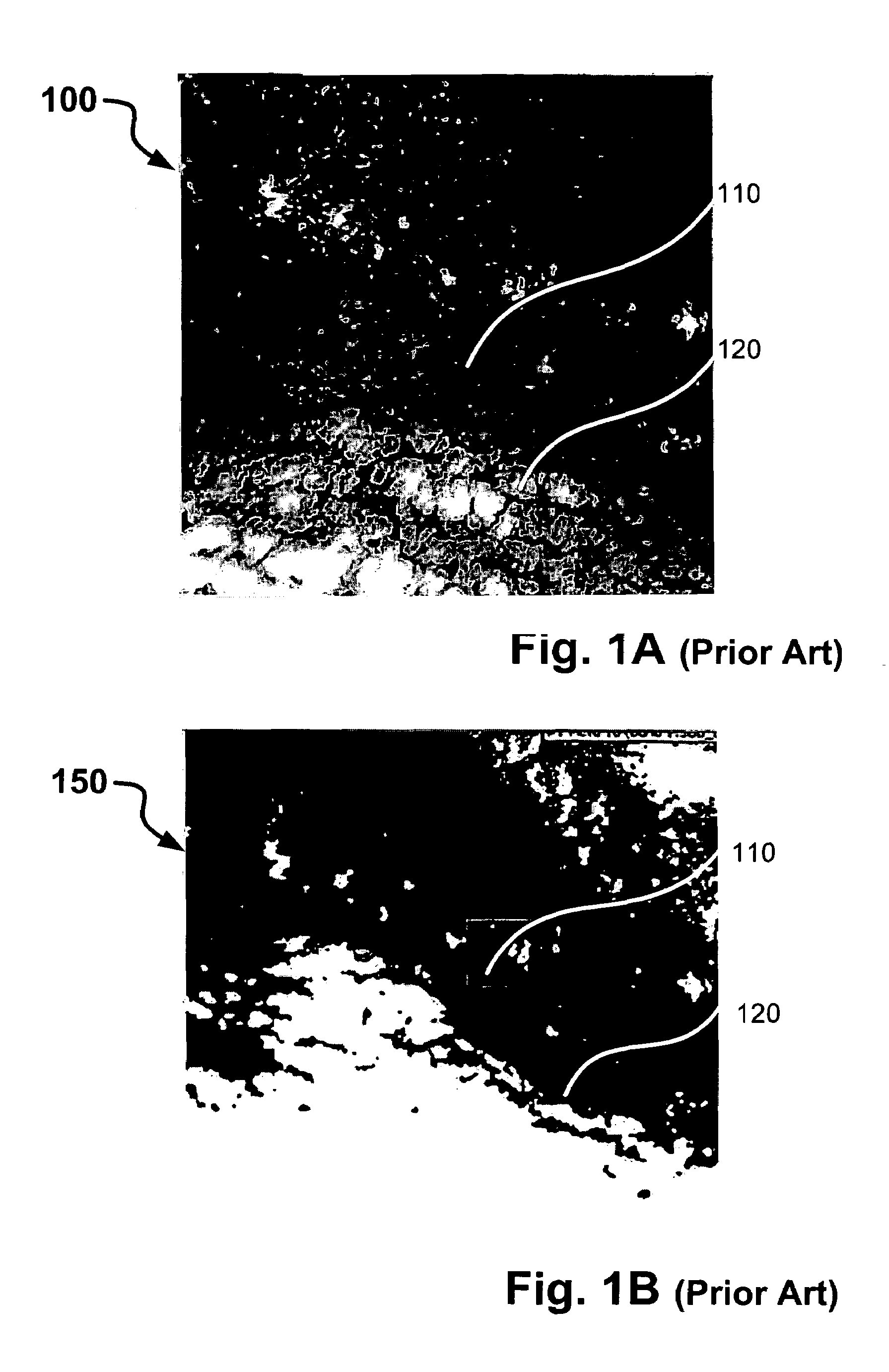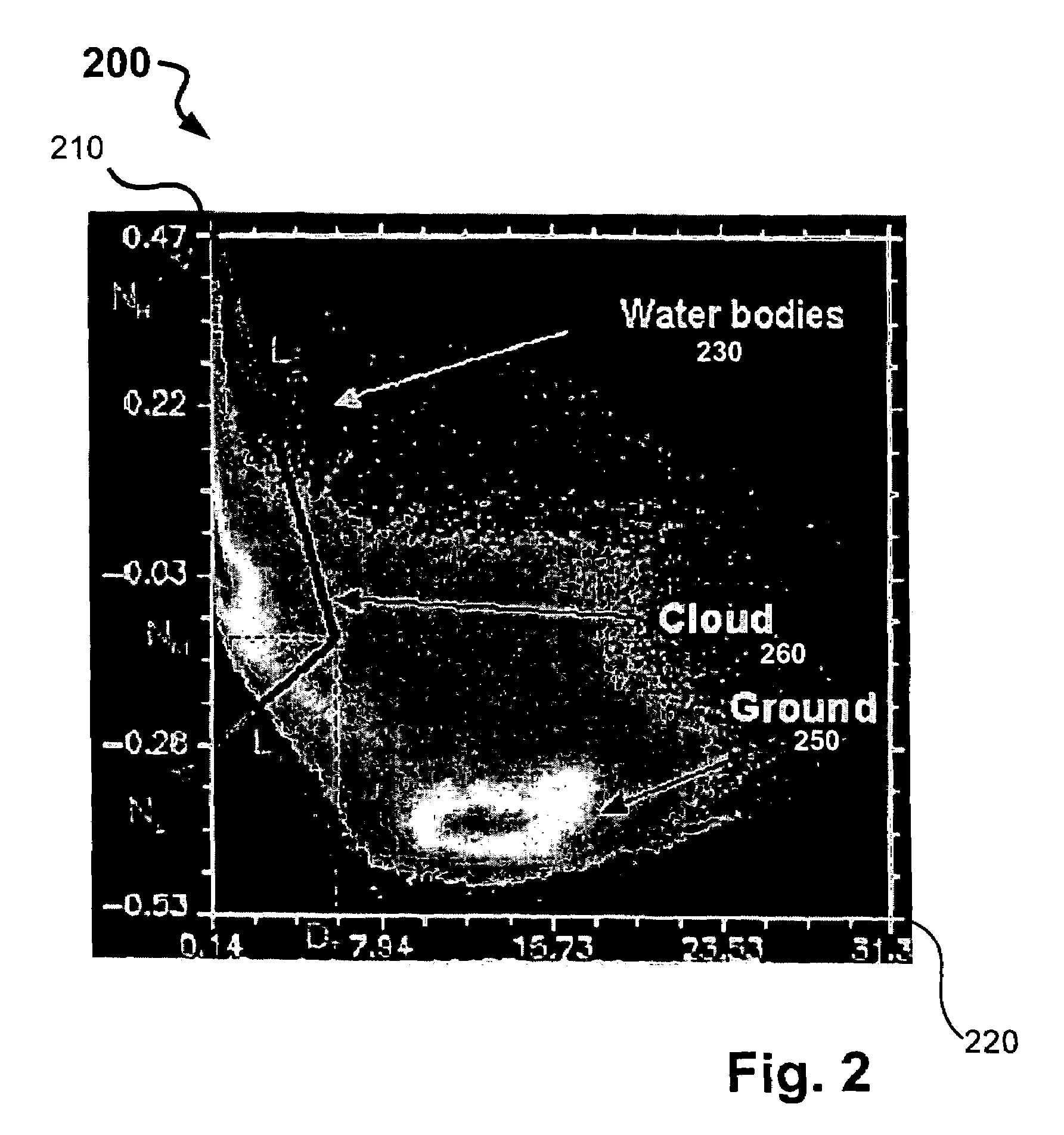Sub-visible cloud cover assessment: VNIR-SWIR
a cloud cover assessment and sub-visible technology, applied in the field of image processing, can solve the problems of skewing analysis, reducing contrast, affecting the image quality of the surface below,
- Summary
- Abstract
- Description
- Claims
- Application Information
AI Technical Summary
Benefits of technology
Problems solved by technology
Method used
Image
Examples
first embodiment
[0032]FIG. 3 shows a routine 300 for classifying data points as cloud points or non-cloud points. The routine 300 begins at a block 302, and a next point of top of atmosphere, visible, near-infrared, and short-wavelength infrared data is submitted for processing at a block 304. At a block 306, a comparison of the ρCI to a cirrus-band threshold cloud value is made. If ρCI exceeds the threshold value, the data point is classified as a cloud point at a block 308. If not, the routine 300 proceeds to a next block to make a further comparison of whether the data point represents a cloud point or a non-cloud point.
[0033]In one particular embodiment, the ρCI comparison at the block 306 is made at a wavelength of 1.88 μm. At this wavelength, the reflectance has been determined to be more reliable than at slightly lower wavelengths. Of course, in alternate embodiments, ρCI may be tested at wavelengths other than 1.88 μm, such as at 1.38 μm or other cirrus bands.
[0034]If the comparison of ρCI ...
second embodiment
[0050]FIG. 4 shows a routine 400 for classifying data points as cloud points or non-cloud points. The routine 400 begins at a block 402, and a next point of top of atmosphere visible, near-infrared, and short-wavelength infrared data is submitted for processing at a block 404. At a block 406, a comparison of the ρCI to a cirrus-band threshold cloud value is made. If ρCI exceeds the cloud threshold value, the data point is classified as a cloud point at a block 408. If not, the routine 400 proceeds to a next block to make a further comparison of whether the data point represents a cloud point or a non-cloud point.
[0051]If the comparison of the data point at the block 406 does not result in the data point being identified as a cloud point at the block 408, then at a block 410 the NDSI is compared to an NDSI minimum threshold value and an NDSI maximum threshold value. The NDSI thresholds are set according to empirical analysis of NDSI data such as that shown in FIG. 2. Unlike the routi...
PUM
 Login to View More
Login to View More Abstract
Description
Claims
Application Information
 Login to View More
Login to View More - R&D
- Intellectual Property
- Life Sciences
- Materials
- Tech Scout
- Unparalleled Data Quality
- Higher Quality Content
- 60% Fewer Hallucinations
Browse by: Latest US Patents, China's latest patents, Technical Efficacy Thesaurus, Application Domain, Technology Topic, Popular Technical Reports.
© 2025 PatSnap. All rights reserved.Legal|Privacy policy|Modern Slavery Act Transparency Statement|Sitemap|About US| Contact US: help@patsnap.com



